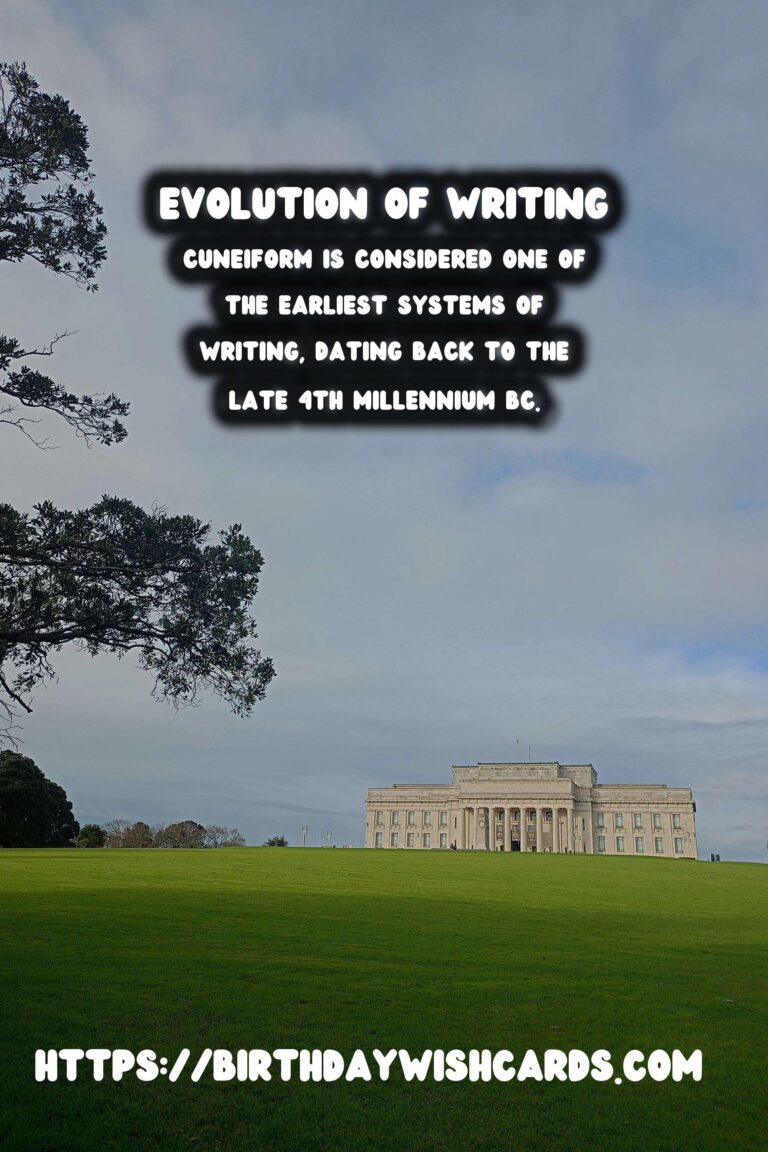
The history of writing is a fascinating journey through time, chronicling the evolution of human communication. From the earliest forms of writing in ancient Mesopotamia to the complex scripts we utilize today, the development of writing systems has been pivotal in the advancement of cultures and societies worldwide.
The Dawn of Writing: Cuneiform
Cuneiform is considered one of the earliest systems of writing, dating back to the late 4th millennium BC. Originating in the ancient region of Sumer, present-day southern Iraq, cuneiform was initially developed for record-keeping. Using a stylus made from reed, scribes pressed wedge-shaped marks into wet clay tablets, from which the script takes its name.
Over time, cuneiform became more sophisticated, allowing for the documentation of everything from legal contracts to epic poetry. As the script spread across Mesopotamia, it facilitated the growth of trade, governance, and culture.
Hieroglyphics: Sacred Carvings in Ancient Egypt
While cuneiform was developing in Mesopotamia, another form of writing was taking shape in Egypt. Hieroglyphics, known as ‘sacred carvings,’ consists of intricate symbols and pictures that represented sounds and meanings. Hieroglyphics were used primarily for religious texts inscribed on temple walls and monuments.
The script remained largely unchanged for centuries, reflecting the Egyptians’ reverence for tradition and the divine.
The Birth of Alphabets
The next significant leap in writing came with the creation of the alphabet. Unlike cuneiform and hieroglyphics, which incorporated at least hundreds of symbols, alphabets have a limited set of characters representing individual sounds. This made writing more accessible and efficient.
The Phoenicians, a seafaring civilization from the eastern Mediterranean, developed one of the first alphabets around 1050 BC. This alphabet was adopted and adapted by the Greeks, whose version provided the foundation for the Latin alphabet used in the Western world today.
China: The Development of Chinese Characters
Parallel to these developments, China was cultivating its own unique writing system. The origins of Chinese characters can be traced back to the Shang dynasty (c. 1600-1046 BC) and their use of oracle bones. Over millennia, Chinese script evolved, yet retained its pictographic and logographic elements, which are still evident in modern Chinese writing.
The Influence of Writing on Society
The advent of writing transformed societies, making them more complex and organized. Writing enabled the recording of history, the execution of laws, the conduct of trade, and the expression of ideas. It allowed cultures to document their achievements and pass down their knowledge through generations.
Technological Transformations: From Manuscript to Digital
With the invention of the printing press by Johannes Gutenberg in the 15th century, writing became even more integral to society. Books could be mass-produced, leading to an explosion in literacy and the spread of knowledge during the Renaissance and Enlightenment.
In modern times, digital technology has further revolutionized writing, enabling instantaneous global communication and the creation of digital texts and e-books. Despite the dramatic changes writing has undergone, its core purpose remains the same: to communicate and preserve human experience.
Conclusion: Writing in the Modern World
Today, writing continues to evolve with the advent of new technologies and platforms. From social media to scientific journals, writing remains central to human expression and understanding. The history of writing is a testament to humanity’s ingenuity and its unyielding desire to connect and convey ideas across time and space.
The journey from cuneiform to modern alphabets encapsulates humanity’s relentless pursuit of advancement and self-expression, ensuring that writing will continue to be an essential aspect of human civilization for centuries to come.
The history of writing is a fascinating journey through time, chronicling the evolution of human communication. Cuneiform is considered one of the earliest systems of writing, dating back to the late 4th millennium BC. 









#writinghistory #alphabets




